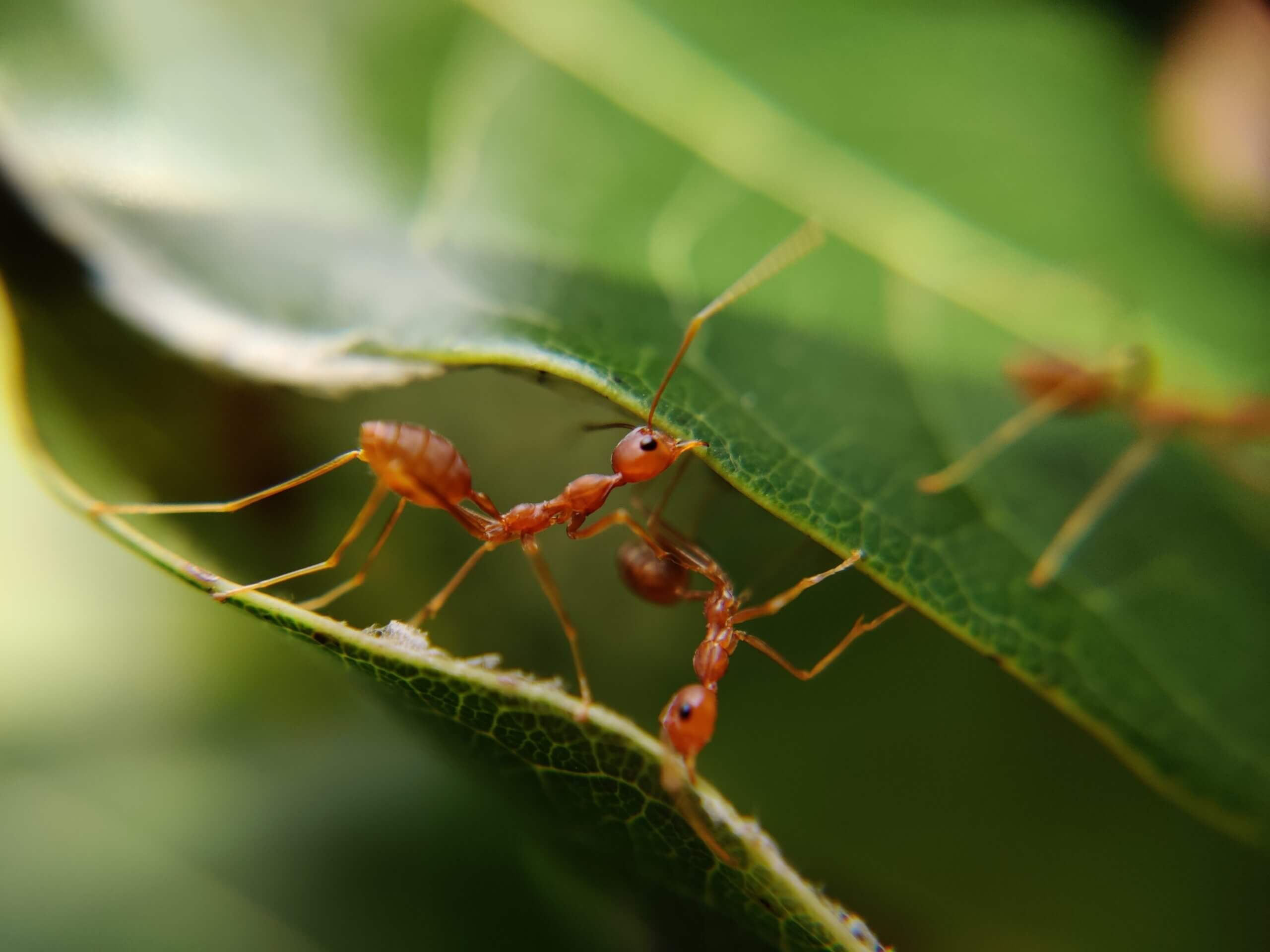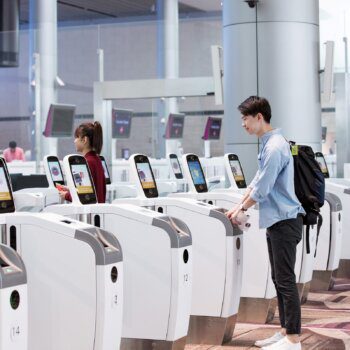Key Takeaways:
There may be new wisdom to gain from what scientists have learned about ants’ biology. Ant farmers face many of the same challenges as human farmers do, including the threat of pests. Ant pesticides are produced by bacteria they allow to grow in their nests, and in some cases even on their bodies. Researchers are experimenting with applying live bacteria to crop plants to determine if they are effective at producing pesticides that can evolve in real time along with pests.
King Solomon may have gained some of his famed wisdom from an unlikely source – ants.
According to a Jewish legend, Solomon conversed with a clever ant queen that confronted his pride, making quite an impression on the Israelite king. In the biblical book of Proverbs (6:6-8), Solomon shares this advice with his son: “Look to the ant, thou sluggard, consider her ways and be wise. Which having no guide, overseer, or ruler, provideth her meat in the summer, and gathereth her food in the harvest.”
While I can’t claim any familial connection to King Solomon, despite sharing his name, I’ve long admired the wisdom of ants and have spent over 20 years studying their ecology, evolution and behaviors. While the notion that ants may offer lessons for humans has certainly been around for a while, there may be new wisdom to gain from what scientists have learned about their biology.Ants have evolved highly complex social organizations.
Lessons from ant agriculture
As a researcher, I’m especially intrigued by fungus-growing ants, a group of 248 species that cultivate fungi as their main source of food. They include 79 species of leafcutter ants, which grow their fungal gardens with freshly cut leaves they carry into their enormous underground nests. I’ve excavated hundreds of leafcutter ant nests from Texas to Argentina as part of the scientific effort to understand how these ants coevolved with their fungal crops.
Much like human farmers, each species of fungus-growing ant is very particular about the type of crops they cultivate. Most varieties descend from a type of fungus that the ancestors of fungus-growing ants began growing some 55 million to 65 million years ago. Some of these fungi became domesticated and are now unable to survive on their own without their insect farmers, much like some human crops such as maize.Ants started farming tens of millions of years before humans.
Ant farmers face many of the same challenges human farmers do, including the threat of pests. A parasite called Escovopsis can devastate ant gardens, causing the ants to starve. Likewise in human agriculture, pest outbreaks have contributed to disasters like the Irish Potato Famine, the 1970 corn blight and the current threat to bananas.
Since the 1950s, human agriculture has become industrialized and relies on monoculture, or growing large amounts of the same variety of crop in a single place. Yet monoculture makes crops more vulnerable to pests because it is easier to destroy an entire field of genetically identical plants than a more diverse one.
Industrial agriculture has looked to chemical pesticides as a partial solution, turning agricultural pest management into a billion-dollar industry. The trouble with this approach is that pests can evolve new ways to get around pesticides faster than researchers can develop more effective chemicals. It’s an arms race – and the pests have the upper hand.
Ants also grow their crops in monoculture and at a similar scale – after all, a leafcutter ant nest can be home to 5 million ants, all of which feed on the fungi in their underground gardens. They, too, use a pesticide to control Escovopsis and other pests.
Yet, their approach to pesticide use differs from humans’ in one important way. Ant pesticides are produced by bacteria they allow to grow in their nests, and in some cases even on their bodies. Keeping bacteria as a living culture allows the microbes to adapt in real time to evolutionary changes in the pests. In the arms race between pests and farmers, farming ants have discovered that live bacteria can serve as pharmaceutical factories that can keep up with ever-changing pests.
Whereas recent developments in agricultural pest management have focused on genetically engineering crop plants to produce their own pesticides, the lesson from 55 million years of ant agriculture is to leverage living microorganisms to make useful products. Researchers are currently experimenting with applying live bacteria to crop plants to determine if they are effective at producing pesticides that can evolve in real time along with pests.
Improving transportation
Ants can also offer practical lessons in the realm of transportation.
Ants are notoriously good at quickly locating food, whether it’s a dead insect on a forest floor or some crumbs in your kitchen. They do this by leaving a trail of pheromones – chemicals with a distinctive smell ants use to guide their nest mates to food. The shortest route to a destination will accumulate the most pheromone because more ants will have traveled back and forth along it in a given amount of time.
In the 1990s, computer scientists developed a class of algorithmsmodeled after ant behavior that are very effective at finding the shortest path between two or more locations. Like with real ants, the shortest route to a destination will accumulate the most virtual pheromone because more virtual ants will have traveled along it in a given amount of time. Engineers have used this simple but effective approach to design telecommunication networks and map delivery routes.

Not only are ants good at finding the shortest route from their nests to a source of food, thousands of ants are capable of traveling along these routes without causing traffic jams. I recently began collaborating with physicist Oscar Andrey Herrera-Sancho to study how leafcutter ants maintain such a steady flow along their foraging paths without the slowdowns typical of crowded human sidewalks and highways.
We are using cameras to track how each individual ant responds to artificial obstacles placed on their foraging trails. Our hope is that by getting a better understanding of the rules ants use to respond to both obstacles and the movement of other ants, we can develop algorithms that can eventually help program self-driving cars that never get stuck in traffic.
Look to the ant
To be fair, there are plenty of ways ants are far from perfect role models. After all, some ant species are known for indiscriminate killing, and others for enslaving babies.
But the fact is that ants remind us of ourselves – or the way we might like to imagine ourselves – in many ways. They live in complex societies with division of labor. They cooperate to raise their young. And they accomplish remarkable engineering feats– like building structures with air funnels that can house millions – all without blueprints or a leader. Did I mention their societies are run entirely by females?
There is still a lot to learn about ants. For example, researchers still don’t fully understand how an ant larva develops into either a queen – a female with wings that can live for 20 years and lay millions of eggs – or a worker – a wingless, often sterile female that lives for less than a year and performs all the other jobs in the colony. What’s more, scientists are constantly discovering new species – 167 new ant species were described in 2021 alone, bringing the total to more than 15,980.
By considering ants and their many fascinating ways, there’s plenty of wisdom to be gained.






























